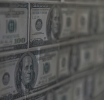
The Origins of Paper Banknotes
Money, a concept as old as civilization itself, has undergone remarkable transformations throughout history.
From primitive barter systems to sophisticated digital currencies, the evolution of money reflects human ingenuity and the needs of diverse economies.
Among the pivotal innovations in this journey is the introduction of paper banknotes. These seemingly simple pieces of paper have revolutionized global finance, underpinning modern economies and facilitating commerce on an unprecedented scale.

The Origins of Paper Banknotes
Early Forms of Money
Before delving into paper banknotes, it’s essential to understand their historical predecessors.Early human societies relied on barter systems, where goods and services were directly exchanged. While effective in small communities, barter was inefficient for larger economies due to its inherent limitations: divisibility issues, lack of common measure of value, and difficulty in storing wealth.
Commodity money emerged as a solution, with items like salt, grain, and livestock serving as mediums of exchange.
However, these commodities were cumbersome and often perishable.
The advent of metal coins marked a significant advancement.
Durable and divisible, coins standardized transactions and stored value more efficiently.
The Invention of Paper Banknotes in China
The true leap towards modern currency occurred during China’s Tang (618–907 AD) and Song (960–1279 AD) Dynasties. Initially introduced as promissory notes or “jiaozi,” these early paper banknotes arose from the need to address coin shortages and facilitate long-distance trade.During the Tang Dynasty, merchants would deposit heavy metal coins with trusted agents and receive a written receipt in return. These receipts could then be exchanged for goods or redeemed for coins at different locations—an early form of banking that laid the groundwork for paper money.
The Song Dynasty refined this system further amidst economic expansion and technological advancements. By 1024 AD, the government began issuing state-backed paper currency known as “jiaochao.” This innovation not only eased trade but also strengthened state control over the economy by regulating currency issuance.
Spread to Europe and Beyond
The concept of paper money gradually made its way westward through explorers like Marco Polo who chronicled Chinese practices in his travels during the 13th century. European merchants and diplomats brought back tales of this revolutionary financial instrument which piqued interest among banking institutions.By the 17th century, European nations began experimenting with their versions of paper currency.
Notably, Sweden’s Stockholms Banco issued Europe’s first banknote in 1661 under Johann Palmstruch’s direction. This initiative demonstrated both potential benefits—such as reduced reliance on precious metals—and risks like inflation if not properly managed.
Impact on Modern Economies
The transition from metal-based currencies to paper banknotes catalyzed significant changes within global financial systems. Central banks emerged as regulators overseeing currency issuance while ensuring economic stability—a role that remains crucial today.Paper banknotes facilitated greater liquidity and flexibility within economies by simplifying large transactions without relying solely on physical commodities or metals whose supply could fluctuate dramatically causing economic instability.
However serious challenges have also accompanied widespread adoption; counterfeiting poses ongoing security concerns necessitating continuous advancements in anti-counterfeiting technologies like holograms embedded threads watermarks etc.;
inflation management requires careful monetary policies to balance supply demand dynamics effectively preventing devaluation maintaining public trust confidence overall health economy.
Money, History, Banknotes, Economy, Evolution









Report
My comments